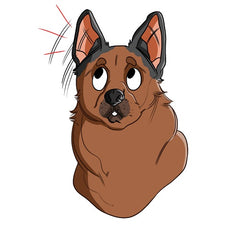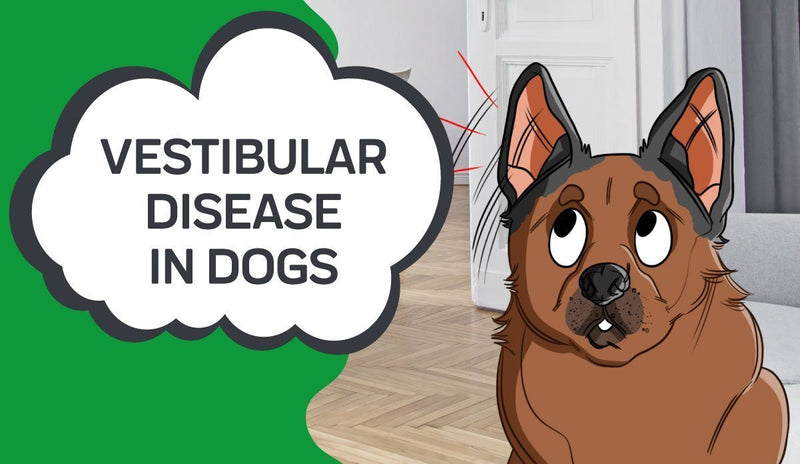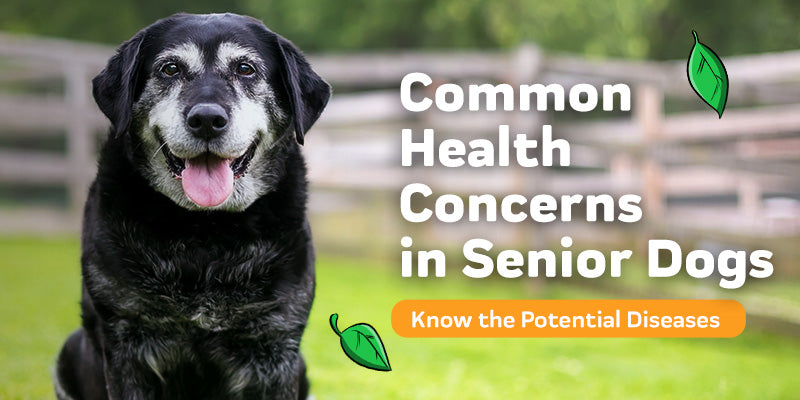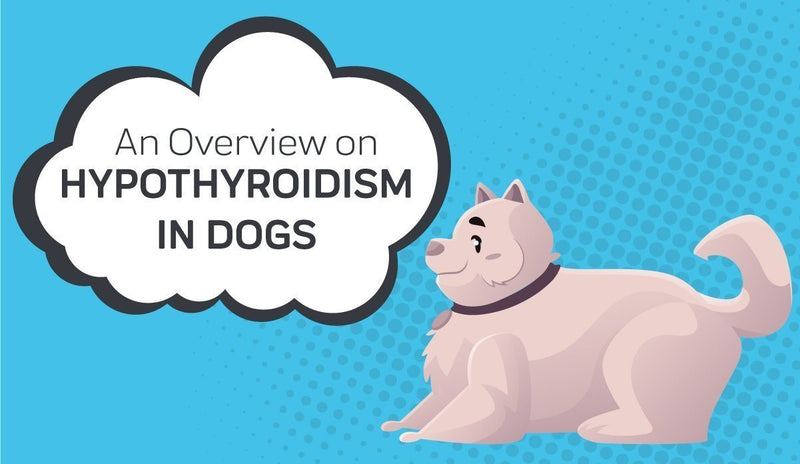There are some weird and scary behaviors your dog can display that come from canine vestibular disease. If your dog has a dizzy spell or can't stand or walk, take it seriously, but don't freak out. They may just be having inner ear trouble. Read this post to learn about vestibular disease in dogs, its symptoms and treatment.
Canine Vestibular Disease: An Overview

Canine vestibular disease is a problem with the inner ear that impacts the dog's balance.
Vestibular comes from the word vestibule, a hallway or anteroom. This is a very descriptive name for the complex parts of the ear. There is a whole vestibular system in dogs, and humans, that is located in the brain and the inner and middle ear. This very delicate system detects subtle changes in atmosphere and the dog's body and has a powerful impact on their balance.
Have you ever been dizzy or had a stopped-up ear? You couldn't move normally, or even stand or sit normally if it was bad enough. You felt weird and nauseated, maybe even anxious and irritable. This same thing happens to your dog. With dogs, it impacts their balance and the rhythm of their paws.
Canine vestibular disease is more likely to impact older dogs because things just don't work like they used to anymore, but it can impact dogs of any age.
It is not dangerous in itself. The causes, such as an infection, may be dangerous. The biggest threat to your dog with canine vestibular disease is injury as they are likely to hurt themselves. While you don't want to overly alarm yourself, you should always take symptoms of this disease very seriously and get the dog emergency care because these symptoms are shared by very serious diseases and immediate diagnosis is needed. Also, even though vestibular disease is not dangerous, you need to know how to care for them to keep them calm and safe and ensure that they eat and drink normally.
Canine idiopathic vestibular syndrome

Vestibular problems can be caused by infections, toxins, or other factors influencing the ear. Many times, there is no identifiable cause of the vestibular problem, the dog just clearly has it. This is known as canine idiopathic vestibular syndrome and it is quite common, particularly in older dogs. If your dog has vestibular disease, rather than another condition causing a vestibular problem, the dog will probably be diagnosed with canine idiopathic vestibular syndrome.
Vestibular disease in puppies
While it's most common in older dogs, vestibular disease in young dogs is possible and it can even be a congenital thing with puppies. It is very rare in puppies, only appearing online in scattered scientific cases.
Always take a dog to the vet for symptoms of vestibular disease to rule out other diseases and to learn how to care for your dog.
Vestibular episode in dogs
Thankfully, vestibular disease, the idiopathic kind that isn't caused by another factor, is mainly episodic. The dog has acute symptoms for a while and then the problem corrects itself. The downside is that it will likely come back. Some dogs never fully recover, keeping a slight head tilt or always being slightly unstable. Allowances may have to be made for them to remain safe and active and there may be some things they can't do anymore. The latter is more common in older dogs.
Vestibular disease caused by another factor should go away when the factor is addressed.
Symptoms of vestibular disease in dogs
Symptoms of canine vestibular disease include:

- wobbling
- stumbling
- falling
- "drunk" movements
- an odd gait
- turning in circles
- rolling
- disorientation
- slight or extreme head tilt that lasts longer than simply listening to a noise
- leaning in the direction of the head tilt or leaning without a head tilt
- odd eye movements, jittering, jerking, or darting back and forth
- unwillingness to stand or walk
- accidents because they are unwilling or unable to go outside, in the presence of other symptoms
- reluctance to drink or eat
- nausea or vomiting
- anxiety or irritability in conjunction with these other symptoms
590 people per month search for dog vestibular disease panting. If your dog is experiencing noteworthy panting while suffering these other symptoms, it is probably from their anxiety. You should include it in your description of the symptoms for the vet, just so they have a perfectly clear image of the dog's case. It is not a direct symptom of the disease but can accompany it because of the stress the disease causes.
Symptoms of vestibular disease will have rapid onset. There isn't any warning and there is no gradual progression, they'll just suddenly act like they're going haywire. They may wake up one morning that way, suddenly act crazy, or get increasingly unstable over a matter of a few hours.
These symptoms sound really scary. So try not to freak out. You don't want to make the dog more upset than they probably already are or put yourself through excessive stress.
That being said, you should still always get them emergency care because these symptoms are shared with dangerous diseases. It probably isn't the dangerous disease, but you need to be sure because they require immediate treatment. You also need to know how to care for your dog properly to keep them safe, calm, and healthy.
Causes of vestibular disease in dogs
Most vestibular disease is the idiopathic kind where the cause is never identified. Their poor vestibular system just doesn't want to act right.
Causes of canine vestibular disease include:

- toxins that impact the ear
- injury
- tumors
- hypothyroidism
- infections
The connection is unclear, but experts report that it seems to be more common for larger dogs to have vestibular problems.
While there is no evidence that they can cause vestibular disease, allergies impacting nasal function may bring about or exacerbate a vestibular episode. Barometric changes while traveling or during weather events may also bring about or exacerbate an episode.
Diagnosing vestibular disease in dogs
The vet will need to hear both your account of symptoms and the dog's history.
Three questions need to be answered:
- Has the dog ingested or breathed a toxic or potentially toxic substance? This may be a food, a cleaning product, a chemical, a human medication, a cosmetic, or something the dog is allergic to.
- Has the dog had an accident, been in a fight, or suffered a known injury in the preceding 24 hours? They may have trauma.
- Has the dog been somewhere unusual where they may have encountered an allergen, a toxin, or a venomous animal?
They may ask you other questions to rule out symptoms or potential events that may indicate another disease like a tumor or stroke.
The vet will observe the dog for symptoms and check their ears for signs of inflammation. While the vet is checking their ear, they may get stressed. Try to calm them by speaking to them in soft, loving tones and maybe even petting them soothingly.
They will probably lift the dog's paw and flip it over to see if the dog can turn their paw back to its normal position. Inability to do this is an indicator of stroke.
They can run blood tests and other tests to detect infections or other diseases. MRIs and other tests for problems in the brain may be run, but the vet may wait to see if the vestibular disease can clear itself up before moving on to this step. It depends on how likely one or the other seems.
Treatments for vestibular disease in dogs
If the vestibular symptoms are caused by an underlying factor or disease, then that will be treated and the symptoms should go away. While the dog is being treated, you will probably have to follow some of the advice below to manage their symptoms.
If the dog has idiopathic canine vestibular disease and they can't eat or drink or are dehydrated from vomiting, they will be kept at the vet's office to be fed and hydrated until they can eat and drink on their own.
If they can eat and drink, they will be sent home. Time is the best cure for an episode of idiopathic canine vestibular disease. but that doesn't mean your dog just has to suffer and there is nothing you can do. The vet will probably send them home with anti-nausea medication and maybe something for dizziness and/or a sedative if they are too unstable or too stressed. You will also want to protect the dog by making the home as safe as you can for them to move around in and to keep them off furniture and not let them use stairs by themselves. You may need to carry them outside to go to the bathroom or give them potty pads. Placing their food and water near where they are staying will make it easier and safer for them to make use of it.
Corticosteroids have been prescribed in the past, but it is not a popular treatment at this time because the scientific evidence shows little indication that it really helps.
We mentioned making the home safe. You will also want to keep them as stress-free as possible. Love them, if they don't want to hide. If they do want to be alone, provide them a good place to do so. You might keep them in the crate a lot, if they like their crate, so they feel secure. Provide as many of the things they are used to as possible, like their favorite toys and blankets. Try to eliminate or minimize stressors like the doorbell, visitors, changes in the home, etc.
Don't be surprised if they are jumpy or even irritable. Having your balance messed up is like losing one of your senses, this makes the animal feel frightened and they may act out.
Recovery time for vestibular disease in dogs
Dogs with idiopathic canine vestibular disease should see some relief in as little as 72 hours, but it is not surprising if it takes anywhere from a few days to 30 days for the episode to resolve completely. With some dogs, usually older ones, some residual effect may be permanent.
Should you keep dogs with vestibular disease away from other pets and children?
Vestibular disease is not contagious, so they can't give it to another pet or you, but whether they can be around other pets or children depends on how well they can still fend for themselves. They may accidentally hurt a small pet or child or be hurt by another pet or child if they can't get around normally. Irritability may also make them unsafe to be around other pets and children. You can help them maintain some sense of normalcy by letting them spend time with the rest of their family, but only with supervision.
If you have multiple pets in the house displaying similar symptoms, they were likely all exposed to something like a toxin. Or you're unlucky enough to have multiple pets with vestibular disease and an allergen or storm is wreaking havoc on them all at once.
Dog not recovering from vestibular disease
If your dog doesn't show marked improvement in a few days to a week, the vet will probably tell you how long to expect. Call the vet back up for advice. The problem may not be vestibular disease.
If the dog has improved but is not 100% after a month, call the vet back up. You should ask if they need to see the dog again.
Remember that unless the problem was caused by another factor, the dog will probably suffer from vestibular episodes again. How often and how severe they will be is unknown and depends on too many factors, but as long as you know that is the cause of the problem, you can just focus on making your dog comfortable and safe while they recuperate. It is not a sign that your dog was not treated properly or didn't recover because they have another episode. It's just the nature of the illness.
How CBD Oil May Help with Canine Vestibular Disease
CBD oil shows promise and gains a lot of attention for potentially helping with a vast array of pet ailments.
CBD oil may help in a vestibular episode in dogs by:
- easing nausea
- alleviating stress
- providing a sedative effect
- soothing pain from an injury reducing inflammation from an injury
- soothing bed sores
- preventing and killing infections
- easing the side effects of medications they need
The most dangerous aspect of a vestibular episode in dogs is the risk of them not being able to eat or drink. Vets may prescribe anti-nausea medication to help with this, but if you weren't given one or the dog can't take it, CBD oil may serve the same purpose.
If you've ever had inner ear troubles, you can understand why your dog gets anxious during a vestibular episode. If not, imagine being dizzy, perhaps so dizzy you can't stand or even sit, for days or weeks on end. Your dog can't do what they normally do and feels completely disoriented. This is frightening to them as they can't take care of themselves. CBD oil is commonly used to address anxiety in humans and pets.
Vets sometimes prescribe sedatives to help with the anxiety and make the dog more relaxed so they are less likely to want to run around and potentially hurt themselves. if you weren't given one or the dog can't take it, you might try CBD oil in its place. Just make sure you give them an amount intended to relax the dog. Different doses can give them a subtle energy boost instead.
Should the dog injure themselves, CBD oil can be given orally or topically to potentially reduce pain and inflammation.
If the dog lays down too much because they can't get around normally, they may get bed sores. These are painful and dangerous because they may get infected. A topical CBD balm might soothe the pain, reduce inflammation, and serve as a barrier to prevent infection. If the sore is already infected, CBD oil shows promise at killing infections. Should the dog not be able to take antibiotics, CBD oil could be used in their place as long as you watch for signs that it isn't working and get immediate medical help should that happen.
While CBD oil hasn't been studied and tested long enough to gain FDA approval, it is exciting scientists with all of the ailments it shows promise at addressing. Scientists have discovered that humans and many animals have an endocannabinoid system that creates and uses its own cannabinoids to maintain the body's homeostasis. External cannabinoids like cannabidiol in CBD oil interact in the body much like its own cannabinoids, addressing deficiencies or providing a boost.
CBD oil for pets is available as:
- oil tinctures
- extract concentrates
- capsules
- crunchy treats
- soft treats
- topical balms
Innovations from Innovet
We create scientifically-backed natural and eco-friendly products to address pet problems. If you're dealing with a vestibular attack in dogs, you might be interested in our CBD oil tinctures, treats, capsules, and balm.
If you encounter a pet-related problem or pet ailment that no traditional or alternative method addresses, let us know. We love to innovate for pets and pet owners.
Sources:
Vestibular Disease in DogsAcute Vestibular Disease in Old Dogs
Vestibular Disease
Head Tilt in Dogs: A Clinical Approach
Vestibular Disease or "Old Dog'' Syndrome
















